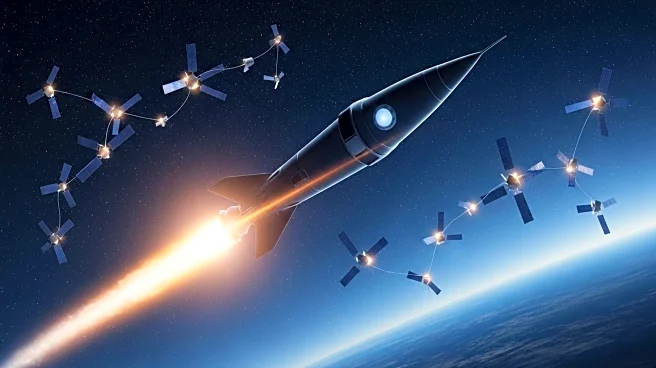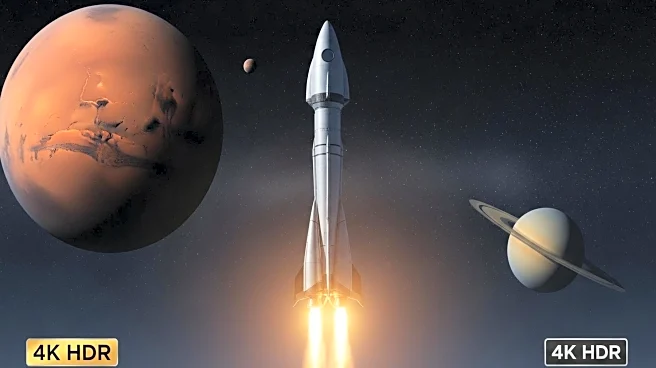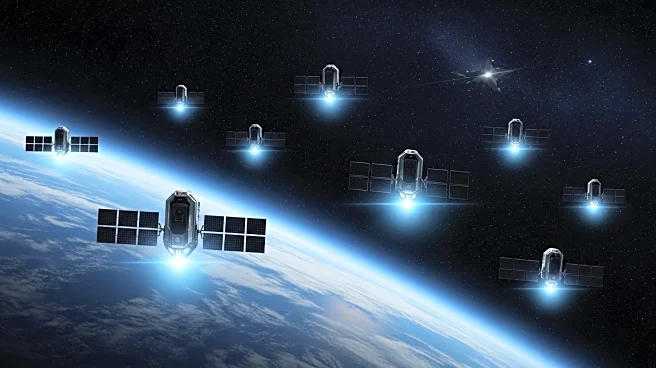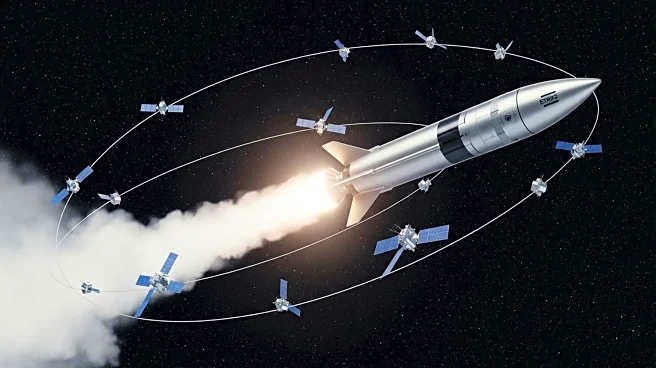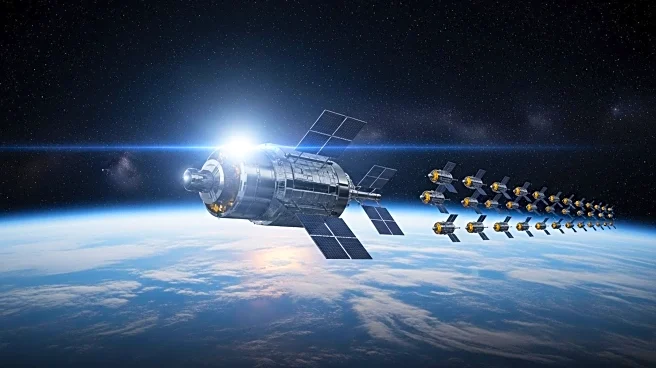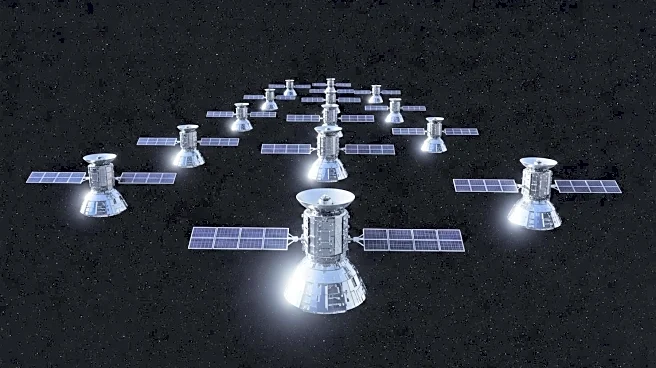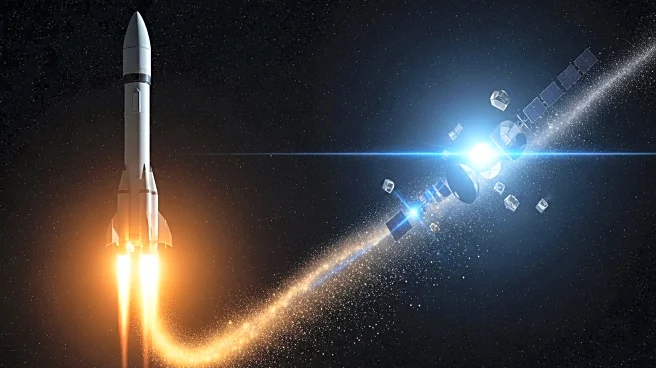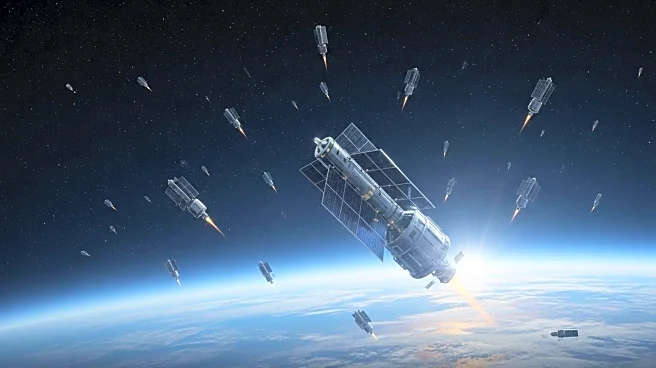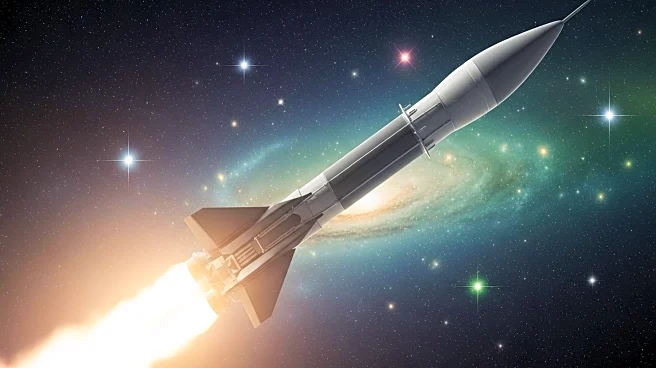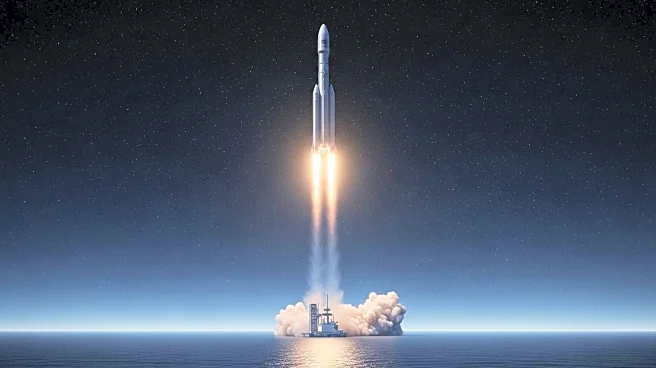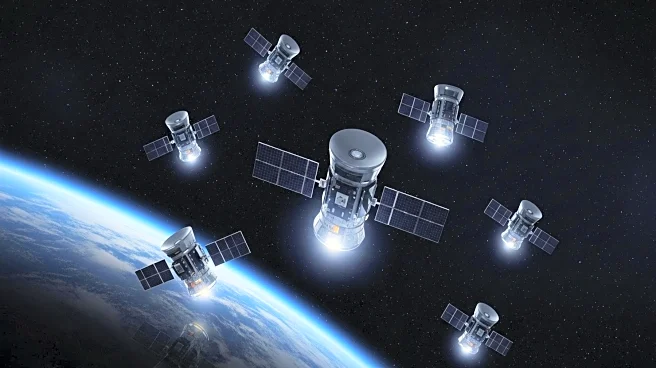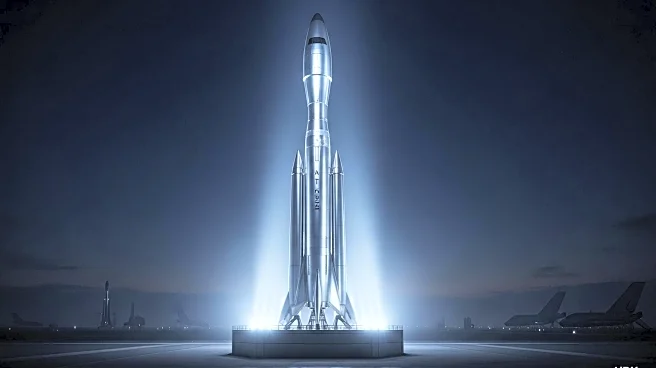What is the story about?
What's Happening?
SpaceX launched a Falcon 9 rocket carrying 28 Starlink V2 Mini satellites from Vandenberg Space Force Base. The launch took place on October 7, 2025, at 8:54 p.m. PDT. The Falcon 9 booster, designated B1071, completed its 29th flight, making it the second-most flown booster in SpaceX's fleet. The booster successfully landed on the drone ship 'Of Course I Still Love You,' marking the 156th landing on this vessel. The mission added to SpaceX's growing Starlink megaconstellation, which aims to provide global internet coverage.
Why It's Important?
The successful launch and landing of the Falcon 9 booster highlight SpaceX's advancements in reusable rocket technology, which significantly reduce the cost of space missions. The expansion of the Starlink network is crucial for improving internet access in remote areas, potentially transforming communication and economic opportunities. As SpaceX continues to deploy satellites, it strengthens its position in the satellite internet market, challenging traditional providers and fostering competition that could lead to better services and lower prices for consumers.
What's Next?
SpaceX is expected to continue its aggressive launch schedule to expand the Starlink constellation. The company will likely focus on enhancing the performance and coverage of its internet service, aiming to attract more users globally. Regulatory challenges and competition from other satellite internet providers may influence SpaceX's strategies. The company will need to address concerns related to space debris and orbital congestion, ensuring the sustainability of its operations.
Beyond the Headlines
The growth of the Starlink network raises concerns about its impact on astronomical research and the visibility of the night sky. SpaceX has been working on solutions to minimize these effects, such as developing satellites with reduced reflectivity. The company's efforts to balance technological progress with environmental and scientific considerations will be closely watched by the scientific community and regulatory bodies.
AI Generated Content
Do you find this article useful?
